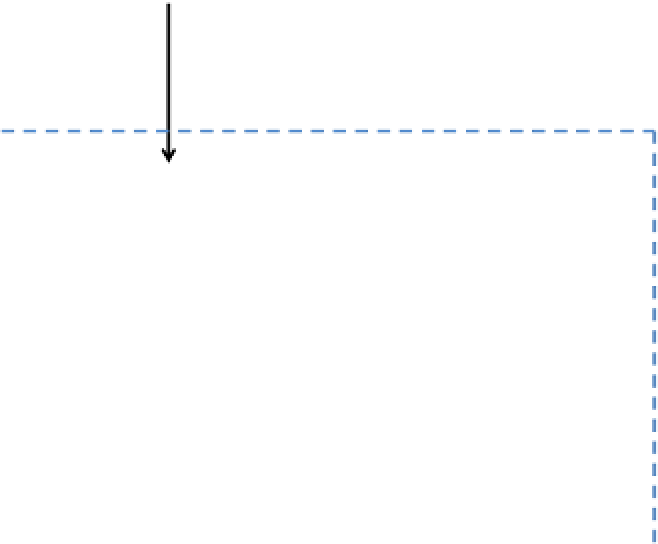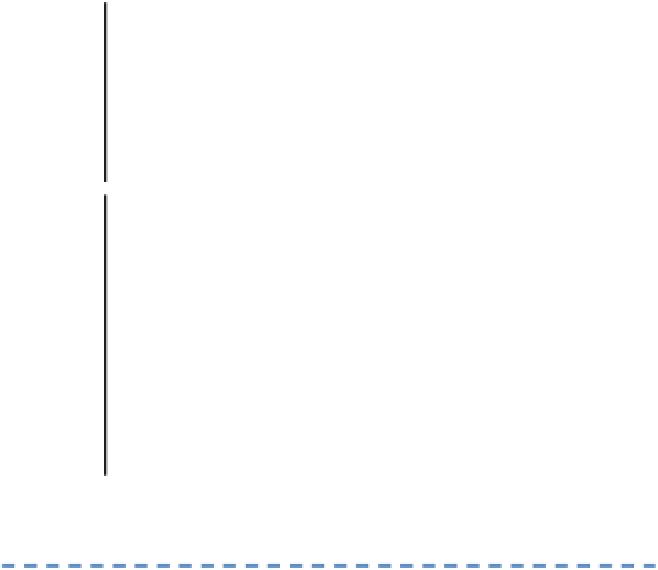Biomedical Engineering Reference
In-Depth Information
Inhibitory connection
Synapse
g
Higher-
level
neurons
Afferent
neurons
Receptive
field
Sensors
Sensors
Neuron
Basic sensory system
Region of stimuli
FIGURE 2.2
Organization of a generic neurobiological sensory system. Images adapted from Wikipedia and Ref.
11
.
neuron, the potential inside the membrane with
respect to the potential outside the membrane is
about
−
65 mV, also referred to as the
resting
potential
. This potential is increased by the influx
of sodium ions (Na
+
) inside the cell, causing
depolarization, whereas the potential is decreased
by the efflux of potassium ions (K
+
) outside the
cell, causing hyper polarization Once the action
potential is generated, the Na
+
ion channels are
unable to reopen immediately until a built-up
potential is formed across the membrane. The
delay in reopening the sodium channels results
in a time period called the
refractory period
, as
shown in
Figure 2.3
, during which the neuron
cannot spike.
The network of afferent spiking neurons can
be viewed as an analog-to-digital converter,
where the network faithfully encodes different
features of the input analog sensory stimuli using
a train of spikes (that can be viewed as a binary
sequence). Note that the organization of the
receptive field introduces significant redundancy
in the firing patterns produced by the afferent
neurons. At the lower level of processing, this
redundancy makes the encoding robust to noise,
but as the spike trains are propagated to higher
processing layers this redundancy leads to deg-
radation in energy efficiency. Therefore, the net-
work of afferent neurons self-optimizes and
adapts to the statistics of the input stimuli using
inhibitory synaptic connections.
The process of inhibition (among the same
layer of neurons) is referred to as
lateral inhibition,
where by the objective is to optimize (reduce) the
spiking rate of the network while faithfully cap-
turing the information embedded in the recep-
tive field. This idea is illustrated in
Figure 2.2
,
where the afferent neural network emphasizes



























































































































































